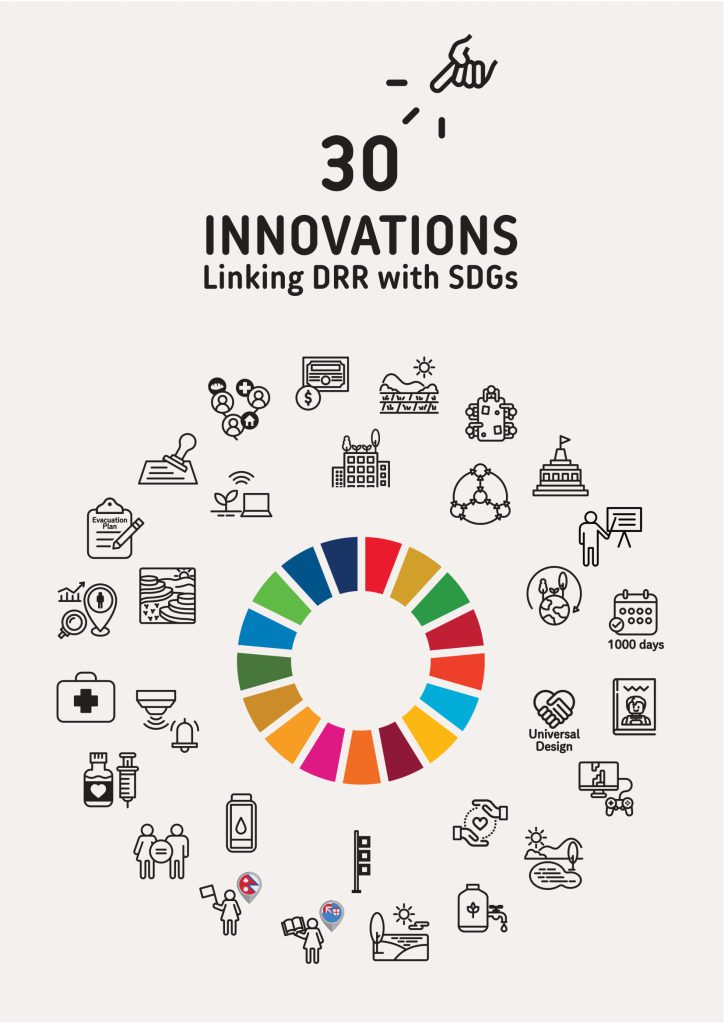
“30 Innovations Linking with Disaster Risk Reduction with Sustainable Development Goals” was published in collaboration with IRIDeS, Keio University, University of Tokyo, UNU-IAS, CWS Japan, and the APRU Multi-Hazards Program.

The publication entitled “30 Innovations linking Disaster Risk Reduction with Sustainable Development Goals” was published in collaboration with the International Research Institute of Disaster Science (IRIDeS) of Tohoku University, Keio University, University of Tokyo, United Nations University-Institute for the Advanced Study of Sustainability (UNU-IAS) and CWS Japan under the auspices of the Association of Pacific Rim Universities (APRU) Multi-Hazards Program. The report is downloaded from: https://www.preventionweb.net/publications/view/70713
This publication is the second volume in the “30 Innovations” series, and includes an additional 30 innovations focusing on 10 sectors—Emergency response, Gender, Health, Agriculture, Water, Children, Education, Disabilities, Livelihood, and Early warning—to demonstrate the strong association between DRR and SDGs. It is not possible to discuss and consider DRR without examining its association with other sectors and SDGs. Given that the discussion and consideration on DRR is becoming increasingly interdisciplinary and complex, a strong partnership and collaboration beyond sectors is urgently required.
The first volume entitled “30 Innovations for Disaster Risk Reduction” was released at the Global Platform for Disaster Risk Reduction held in Geneva in May 2019, which stated that only high-tech tools should not be considered innovative and useful; rather, an appropriate strategy is imperative to change the current global situation and tackle the complexities of modern society.
Similar to the first volume, another survey was conducted on the most effective DRR innovations, which received 200 responses from academia, governments, the private sector, NGOs, and international and regional organizations. The innovation that was selected as the most effective from the 30 listed items in this publication was “Ecosystem-based DRR” under the “Livelihood” section. The result implies that it is not just high-tech products that require our attention and investment; rather, we should look into knowledge, materials, and approaches that are already available. We should consider how to maintain or channel these existing ideas, instead of focusing on developing expensive new technologies that require complicated procedures to apply.
